
Sydielim Chong is a passionate 19 year old student at Florida International University. Sydielim is on a pre-law track majoring in criminal justice while also applying a minor in statistics. Sydielim is a full time tutor for Bright and Brainy Tutoring. Sydielim also enjoys watching movies, especially thrillers, and loves going out on adventures in hopes of exploring new things all over the world. As a part of Art Society Conflict, she hopes to learn more of the valuable history behind Miami and the artistic culture rooted in the city.
Deering as Text
“The Unknown” by Sydielim Chong of FIU on September 9th, 2020.
The Deering Estate is one of Miami’s oldest historical pieces of land. Once having crossed the wooden gates at the front of the property, it’s like going back in time. The Deering Estate is made up of over 400 acres of land, two houses, and tons of preserved wildlife and nature. One of the first things noticed upon arriving are the two houses as they look nothing alike. Used by Mr. Deering and his wife as the “main house”, the Stone House has a more contemporary and medieval look and feel to it. The Stone House was designed to represent the different places Mr. Deering himself had traveled to and made connections with. Simply looking at it will take you back in time through history. The rooms inside of the house were specifically made in order to represent different religions and cultures. The first room to the left when walking into the house has no doors, instead a black and gold gate, like those used in Spanish culture. Mr. Deering used this room as an art gallery, putting up over half a dozen artworks which he collected throughout his trips to Europe. Looking up at the ceiling, Mr. Deering had the constructors manufacture special tiles that represent everything seen in Miami, from dolphins and seahorses to leaves and palm trees. The second room to the right of the entrance is a study. In contrast to the art gallery which was bright and prestigious, Mr. Deering’s study was a dark room filled with books, a desk, and art, including a portrait of himself. Mr. Deering specifically designed this room so that if there were any fires in the room, it can be withheld in order to preserve the rest of the house and the artwork in it.
Right by its side, there’s the Richmond Cottage which was used by Mr. and Mrs. Deering as a winter home. The Richmond Cottage has a modern and classical look to it. Although classical and modern are contrasting types of houses, this is what made the Richmond cottage special in a unique way. The cottage entailed smaller rooms with more detail. When walking into the cottage, the first room seen is a simple room, a fireplace, a table, and a counter stored with food. The Deering’s stored this food because back then there weren’t any local markets in the area. The next room consists of a prepared dining table. On the walls hang more of his beloved artwork as well as the head of a deer. Being that everything in the cottage was smaller, compared to the Stone house, made the cottage seem like a perfect fit for a winter home as it made everything seem warmer the minute you walk in.
Each house was designed and manufactured to represent the history of Miami and show that the city of Miami has always been a mix of religion and cultures from all around the world.

One of the most interesting things about this historical property is that it has made its way through time, all the way from the 1900’s to 2020. The state of Florida has tried to preserve the land and the houses by making copies of the original artifacts since after Mr. Deering passed away, most of his belongings were sent to a Museum in Chicago. The one thing that was kept exactly the same until 1992 when hurricane Andrew hit Florida, was a neat room in the basement. This room had been hidden for over half a century as it was behind a huge safe. The Stone House was built during the prohibition era and Mr. Deering was clever enough to make a room, hide it, and keep it stocked with alcohol that was shipped out to him from other countries. This detail shows how Mr. Deering was smart and at the end of the day, did what pleased him and what he liked. This safe room wasn’t found until 1992 and even then, the state of Florida had to fly someone out from another country just to get the safe open because it was that difficult. Mr. Deering was a bright man, a man who loved the world, he loved living his life, and a man who always appreciated art, culture, the environment, and religion. It is because of Mr. Deering’s appreciation for the simple and good things in life that the people of South Florida now have a beautiful piece of history to turn to when the facts of our roots have been forgotten.
South Beach as Text
“Cultural Massacre” by Sydielim Chong of FIU on September 27, 2020.
You would be shocked to find out that a place that seems like one of the most natural and rich places in the world, was actually torn, beat, and renovated in order to be what it is today. South Beach in Miami, FL is one of the most popular tourist attractions in the city, however, not many know the true history behind it.
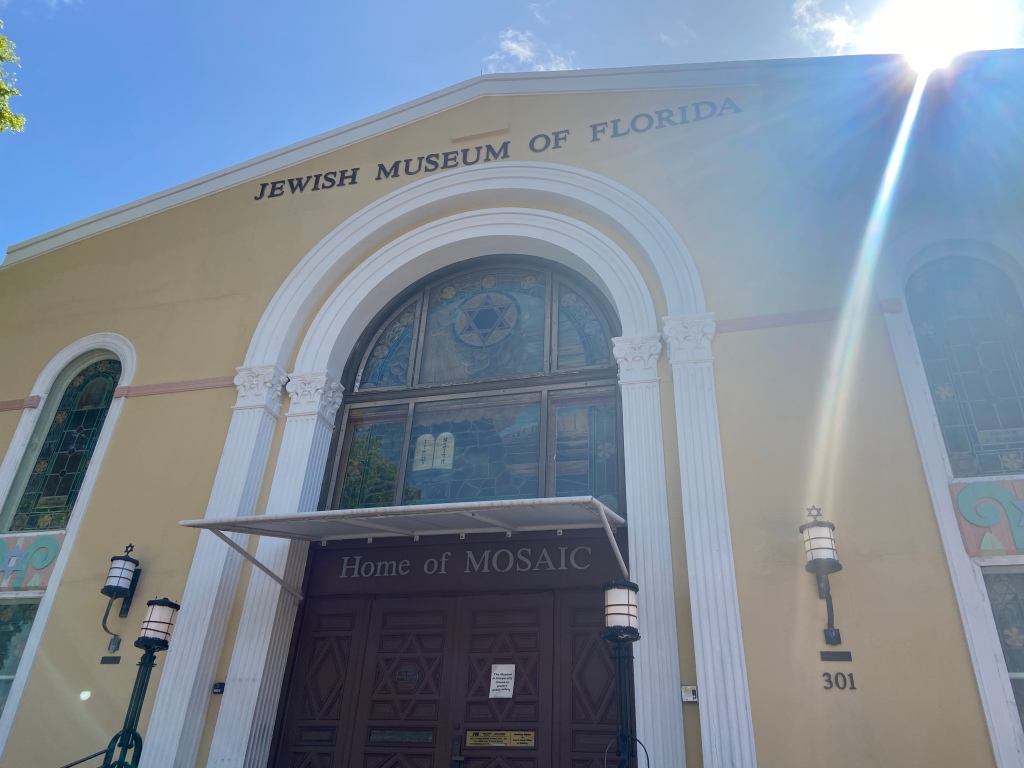
Florida, the first of American territories to be discovered and settled, didn’t allow Jews to settle until the early 1760’s. In Miami, Jews were only allowed to live south of 5th street. The segregation of Jews in Miami was “normal” back then.
Carl Fisher, who was considered the “father of Miami Beach,” refused to sell any property to Jews as he turned the swampy stretch of mangroves into what lies there today, Fisher Island, a beach resort. Furthermore, in the 1930’s many advertisements for these beach resorts and hotels would use slogans such as “Always a view, never a Jew” (Remembering Miami Beach’s Shameful History of Segregation and Racism, 2016)
Interestingly enough, in the same way that Jews could only live south of 5th street, African Americans were not allowed to reside on South Beach as it was predominantly white. While whites would use African Americans for their talents, such as singing and dancing, and have them perform at their restaurants, hotels, and night clubs, after their shift was over, they would simply have to ride out of town and stay at a hotel or rent a home in what is now known as “Overtown, Miami.” The majority of the population in this city is now African American and the reason for this is because back then, African Americans had no choice to but to reside there as it was the closest city to where they worked but were now allowed to live or stay.
Once taking a stroll through South Beach and doing some research, ,you will come to find out that it was not always like it is now. Now, people go to South beach because it is representative of all cultures and races, because as soon as you walk in, you feel at home. However, this was not always the case. Miami is a massacre of mixed cultures, identities, and personalities and that is what makes Miami so special.
Bakehouse as Text
“Together for Corals” by Sydielim Chong of FIU on October 11, 2020.
Coral reefs are one of the world’s most active and complex habitats and are often overlooked. Coral reefs supply a massive range of marine life with shelter and food, they help protect our marine coasts by reducing wave energy from hurricanes and storm, and also attract residents to enjoy activities such as snorkeling and scuba diving, which also provides a great source of income.
Florida is the only state in the United States with shallow coral reefs formed along its coasts. Today, many coral reefs have experienced a health decline due to factors such as water pollution, climate change, rising temperatures in oceans, and coral disease.
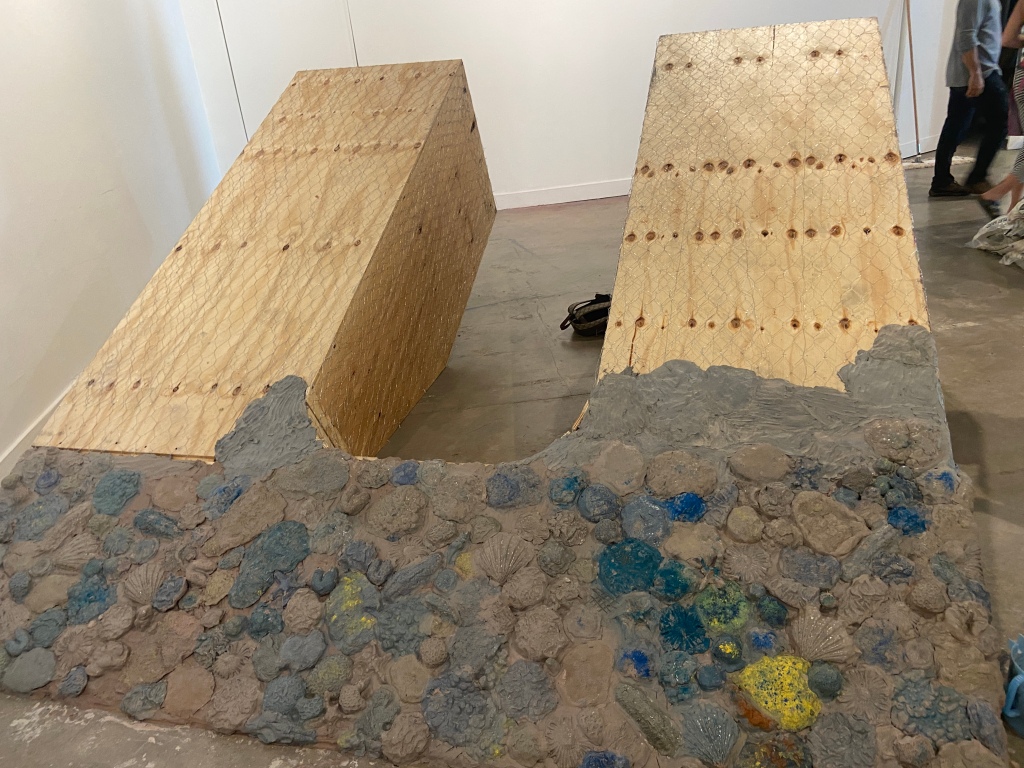
Above is a picture of a coral reef imitation put together by the class of Dr. John William Bailly of Florida International University on October 7th, 2020. This picture represents what can be done if everyone were to understand the importance of keeping the coral reefs safe and healthy. This picture symbolizes teamwork, dedication, and love for the planet and the ground we walk on.
As aforementioned, coral reefs are at risk and this is something that society can help. “It starts individually” words by Lauren Shapiro, the artist and the voice behind it all. When one takes the first step in preserving the nature, the rest will follow.
Rubell as Text
“Collecting and Inspecting” by Sydielim Chong of FIU on October 25th, 2020.
I’d never thought about collecting art. Sure, I like going to museums and viewing artwork as I try to understand what the artist is trying to portray through the piece. However, even with having friends who are artists, the thought of actually buying art never came to mind.
That is, until I went to the Rubell museum and met the woman behind it all, Mera Rubell. Mrs. Rubell spoke to me as she tried to get my class to understand the importance of collecting and valuing art. After this conversation is when I went back around the museum and really tried to understand the beautiful pieces that were right in front of my eyes.

The photo above represents the over-crowdedness Huan faced as a child. This piece of artwork really caught my attention as it made me think of all the children who aren’t as lucky as I and many others have been with life. As soon as I look at this photograph, the first word I think of is ‘desperation.’ Desperation because of the look on his face, desperation because of the bugs all over his body, desperation because, looking at this picture, anyone could tell this man is tired and desperate for better.
After speaking to Mera Rubell, this is the picture I thought of. This piece of art, out of all the ones in the entire gallery, was the one that truly spoke to me. This piece made me feel the most grateful to be myself while also teaching me that although I may not have it all, in somebody else’s eyes, everything I have could be “all” they’ve wanted.
Deering Hike as Text
“Miami before Miami” by Sydielim Chong of FIU on November 8th, 2020.
The Deering Estate is known for its historical context and beautiful architecture. Having only been there once before, I didn’t get the full experience as to how eye-opening it could be. Events I never knew happened, places I never knew existed, all in one location- the Deering Estate.
Although personally, I did not make it through the entire hike, what I did get to experience was definitely breathtaking. Beginning with the wide range of plants, nature, and wildlife and ending with the history and architecture throughout the Deering Estate. Because of this, I got to see firsthand a glimpse of Miami before Miami.

Nightclubs, beaches, and spring break- these are what most people think of when someone says “Miami.” However, what people don’t know is that Miami has a history and places filled with it, places such as the Deering Estate.
Originally, the land was occupied by Paleo-Indians, the Tequesta, and the Seminole. Though difficult to believe, the Cutler fossil site is what revealed where the Paleo-Indians used to live. It is proven that the Tequesta also inhabited the estate through the symbols and artifacts found throughout the hike. For example, the picture above is of a shell the Tequesta used for carving, protection, and hunting.
Sometimes it is hard to believe the Miami we live in today was home to others in a past that was very much different than what we experience today. Before this class, I never knew nor would have imagined this much history in my hometown. I look forward to experiencing more and learning more of the city I was born and raised in to where one day I can educate the people around me as well.
Downtown Miami as Text
“Progress in Miami” by Sydielim Chong of FIU on December 6th, 2020.
Walking through the streets of downtown Miami, one comes at a crossroads in time. From its architectural landscape comprised of buildings erected during the 60s throughout the 80s to the high rises constructed to scratch the itch that is evolution to its over spewing of development and construction to nearby areas such as that of Wynwood, the area possesses a sense of new horizons and modernity at every crosswalk.

The picture of the Spanish style building above is just one of many in the Downtown Miami area. Just looking around the area, the culture in each becomes obvious to anyone. Downtown Miami represents the juxtaposition of Spanish style buildings right next to the glass front empires holding a distinctive sense of the ethnic melting pot that is Miami. Walking through the streets, one can hear Spanish, Creole, French, Hebrew, Arabic and just about any other language from every walk of life.
To me, the city represents progress from the beacons of wealth and cultural exhibits sprung ever day. To me, the city is what motivates, inspires, and drives me to become the version of myself characterized by abundance, self-improvement, and overall titan of industry, politics, culture, and art. I see a multitude of paths defined for me here every day with the city posing the question as to which path I want to take and to the conducive environment for which it will provide.
Everglades As Text
“Preservation” by Sydielim Chong of FIU on January 24th, 2021
Established on December 6th, 1947, Everglades National Park in Florida city is made up of 1.5 million acres which is home to a variety of rare and endangered species such as the American crocodile, the manatee, and the Florida panther.
While the rest of my class took a field trip to the Everglades on January 13th, 2020, I stayed home due to my sensitivity of outdoor areas which are prone to insects that I’m allergic to. However, being that I stayed home, I got the chance to watch videos, read articles, and educate myself a bit more on the history of the national park.
To my surprise, the Everglades is home to one of the largest wetlands in the world. Nine different habitats have been found including the pine rocklands and marine waters. However, the park is best known for its mangroves and freshwater slough that draws water from Lake Okeechobee outward. Truthfully, I’m not a person who likes to be outdoors too much, I’ve always been scared of insects because of my allergies. Therefore, the Everglades has never caught my attention too much.
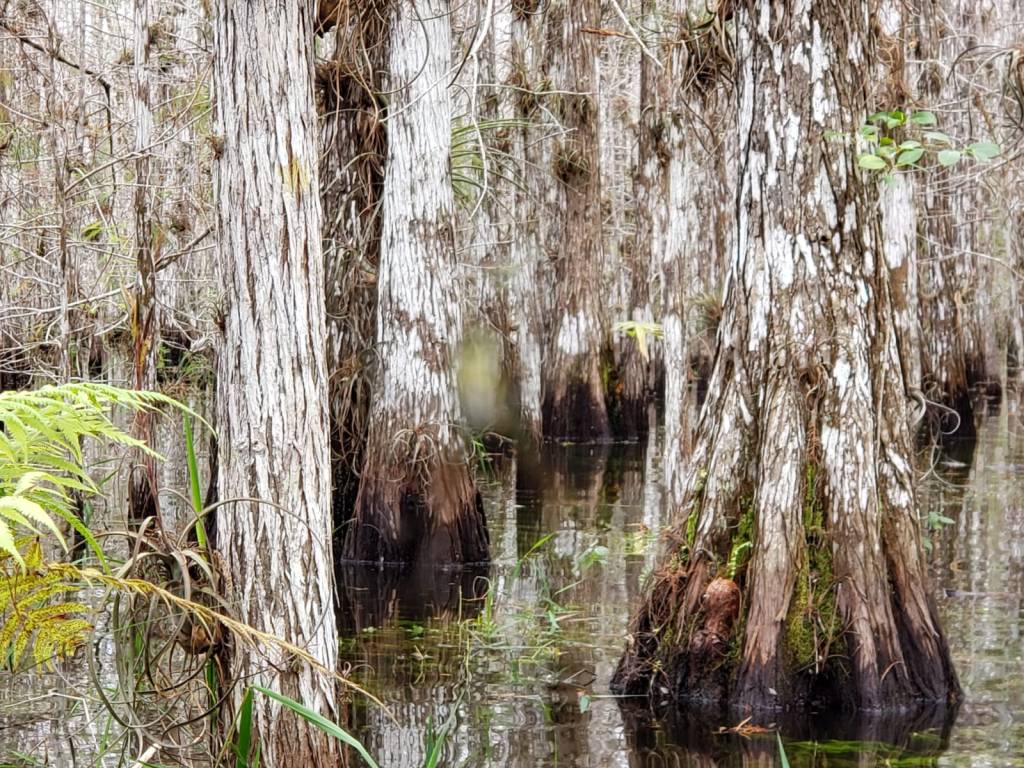
Though I have never been one to be “amazed” by the outdoors and nature, once I saw the pictures my friend and classmate, Lorena Cuenca, sent me, this specific one caught my attention. I love the picture above because not only is it beautiful, but I think really shows the true mystery and all things unknown about the outdoors, wildlife, and nature overall. I can easily say that one of the very few things that really interest me about nature is the mystery behind it all. No matter how much is discovered and how much is seen of nature and wildlife, I believe that we will never truly know the most of it.
Margulies as Text
“The Collection that Speaks” by Sydielim Chong of FIU on January 27th, 2021.
The one thing I have always loved about art is the sense of truth behind it. Visiting the Margulies collection was undoubtedly one of the best experiences I’ve ever had in connection to art. While I’ve always loved going to art museums and diving into what possibilities exist within an art piece, I have never felt so impacted by anything the way this collection impacted me.
Throughout the collection we see various types of art; art made through advanced technology, sculptures, paintings, and even just dozens of plain and simple pictures. However, what stood out the most to me was the history behind most of the pieces Mr. Margulies has collected.

For instance, this enormous piece by Magdalena Abakanowicz. When I first looked at this piece, for some reason, my mind immediately shifted to the Holocaust. This piece represents a combination of 250 adults and children who are beheaded and some even without arms.
Initially, my thoughts were all over the place. I could have thought of about 4-5 different reasons why the artist did what she did with the piece. Yet, the one perception that stuck with me was that they were beheaded in order to depersonalize them; to the Nazi’s, these people were not humans and were not worthy of anything. In addition, because the Nazi’s separated all families without care, I believe that the fact they have no heads also represents the fact that they were alone.
This piece and the many others that have deep messages such as the one above are what really spoke to me throughout my time at Margulies’. I love the wide variety of pieces Mr. Margulies has collected and truly hope to be back soon to find myself studying a couple more.
River of Grass as Text
“More than water” by Sydielim Chong of FIU on March 1st, 2021.
And here I am, once again, writing my blog post about a trip I didn’t get to personally experience. I have to say, I wish my allergies would cooperate and let me enjoy the wonders of my class. Although I do enjoy doing the research and looking at the background of what my class did, I can’t say I enjoy being home doing the research while my classmates go out and have fun, take pictures, and dive in solution holes.

The picture above is one of the solution holes in the Everglades, yes, the one my amazing (crazy) class got to swim in. Solution holes are formed over time when limestone is dissolved. This process is caused mostly by a mixture of rain and the acid produced by decaying leaves. What seems the most interesting to me is how random they appear. You’re walking and see a big hole filled with water and you’d think maybe it was just raining, but the truth being this is just one of the many beautiful wonders that nature gives us to look at, enjoy, and learn about.
Frost as Text
“Hearts” by Sydielim Chong of FIU on March 14th, 2021.
Despite the fact that the museum was placed inside a school I’ve been attending for nearly two years now, I had never gone before. My visit to Frost Art Museum was an unforgettable experience, one in which I was able to learn about art in a deeper context than just paintings or drawings. I remember first walking into Roberto Obregón’s exhibit. I looked around and saw all these roses, petals, and just dozens of pictures and drawings of roses. I had the opportunity of being guided through the exhibit by Amy Galpin, one of the workers for the Museum. Galpin was able to, in a way, explain to me and the rest of the class the reasoning behind Obregòn’s work. She explained that roses were Obregón’s “obsession” in a certain way.
What most caught my attention throughout the lecture and discussion was the fact that Obregón preserved and kept the same 36 roses for over 3 decades. He believed that roses were interesting and wanted to study them and through this, the exhibit I visited came to life. I’ve never thought of roses much unless it was in connection to love or maybe valentine’s day, however, Galpin asked us what we thought about when we thought about roses and many of my classmates brought up some interesting points. This question basically led most of the discussion as it brought up many different topics to speak about, all in relation to the exhibit.
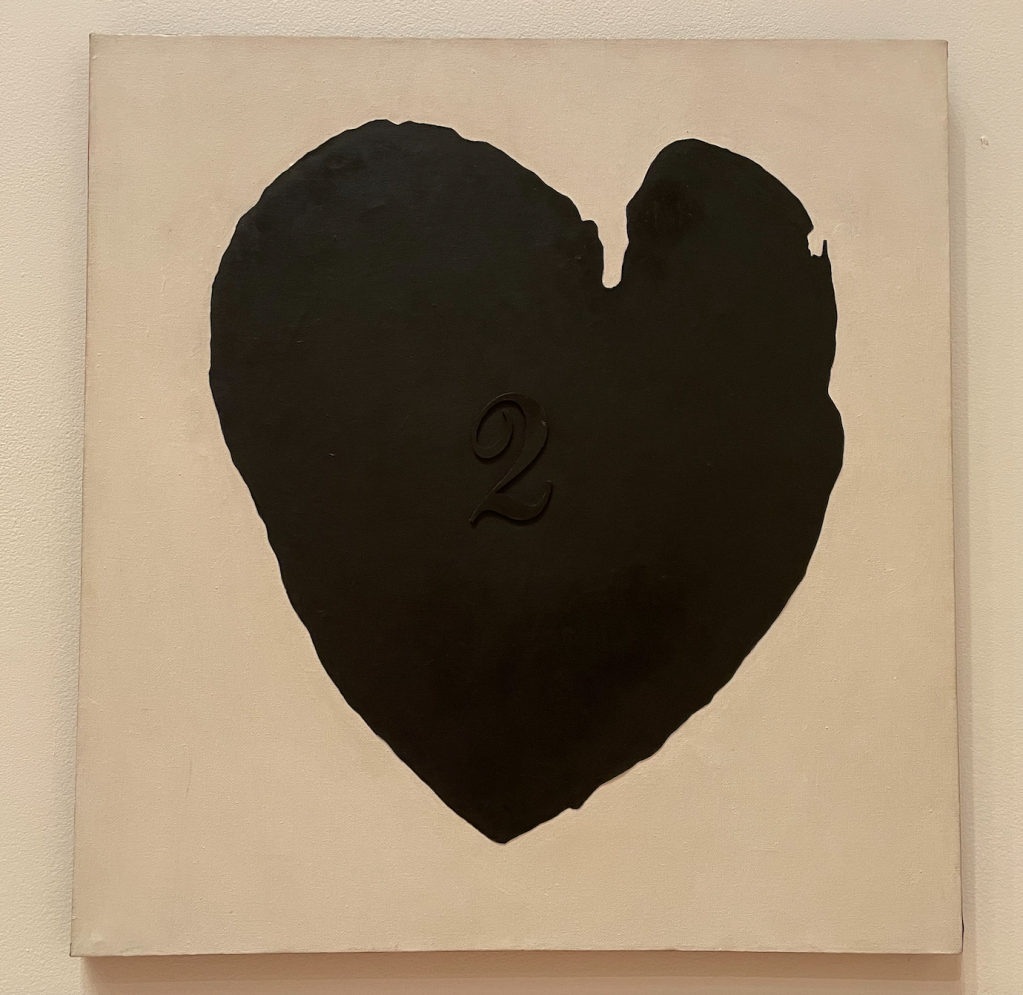
One of the most interesting things Obregón did during his time working on these roses, was that he would tear out all the petals of each rose and number them. This helped him see how many petals are in each rose. In the picture above you can see the “2” engraved in the middle, this shows that it was the second petal ripped from the rose.
This picture in particular caught my attention because I thought it was funny that the petal was shaped like a heart. Given that the rose is probably the most popular flower to be given out under romantic circumstances. I looked at it and instantly thought of love and romance and even first dates. It was at this point when I finally realized that a simple rose or roses, in this case, wasn’t obsession but pure genius. Obregón’s hobby was doing this. As the name of the exhibit says “Accumulate, Classify, Preserve, and Display.” Obregón’s passion and dedication is truly something I will never forget, if even possible. At the end of the tour through this exhibit I realized that there are so many different interpretations to everything, even the simplest things in life.
Coral Gables as Text
“Past Life” by Sydielim Chong of FIU on March 31st, 2021.
During this entire trip to the city of Coral Gables I learned a lot of where the city came from, what it used to be, and how it came to be what it is now. Throughout the trip we visited many places relevant to the history of the city some being the Coral Gables Museum which used to be a fire and police department back when the city first opened its doors. We also visited the Coral Gables city hall, a bookstore which used to be a medical center, we walked down Miracle Mile, went to the Biltmore hotel, and more.

Aside from all of the interesting buildings we visited throughout the day, what most caught my attention was truly the Biltmore. I have always heard about it and it first peaked my interest when I heard it was haunted, so I’ve always wanted to visit.
The Biltmore hotel was built in 1926 by George Merrick, often heard of as the founder of Coral Gables. The hotel soon became known for hosting extravagant fashion shows, banquets, charity events, and water shows in the world’s largest pool. My class got a private tour of the hotel in which we got to see the pool, the ballrooms, even the bell tower (from afar). Once World War II began, the Biltmore was converted into a military hospital by the government. After the war, it went on to serve as a veterans’ hospital. The Biltmore would then become the first site of the University of Miami in 1952. Not long afterwards the Biltmore became abandoned. The property was returned to its former success and reopened in 1987. The Biltmore was added to the National Historic landmarks list ten years later.
The Biltmore was truly as beautiful, historic, and amazing as it sounds and just visiting made me never want to leave. I plan on going back soon in hopes of learning more about the history of the building and how it is doing presently.
Vizcaya as Text
“Europe in South Florida” by Sydielim Chong of FIU on April 10th, 2021.
As sad as it was having to go on this trip knowing it was our last class together, I cannot express how much I loved visiting Vizcaya. One of the most popular tourist attractions right here where I have lived my entire life, and yet, I had never gone before.
Vizcaya is one of the oldest buildings in the city of Coral Gables, it was James Deering’s estate. It was built in the early 1920’s and was James Deering’s idea in attempt to “bring Europe to Miami.” At the time, Coral Gables was not anything close to what it is today; there were no buildings and barely any people. Coral Gables, at the time was not even established as Coral Gables, it was established in 1925.
The villa was incredibly big, there were rooms for everything, and Deering really thought to incorporate even the rarest and unthought of things into Vizcaya. For example, in the pantry on the first floor, there is a chute that can elevate food to the second floor, making it easier for his servants to feed him or send him anything at all to the second floor. The entire time I was there my jaw dropped lower each time I stepped into a different room, not to mention the garden, secret garden, pool, maze, and incredible view from the front of the house.
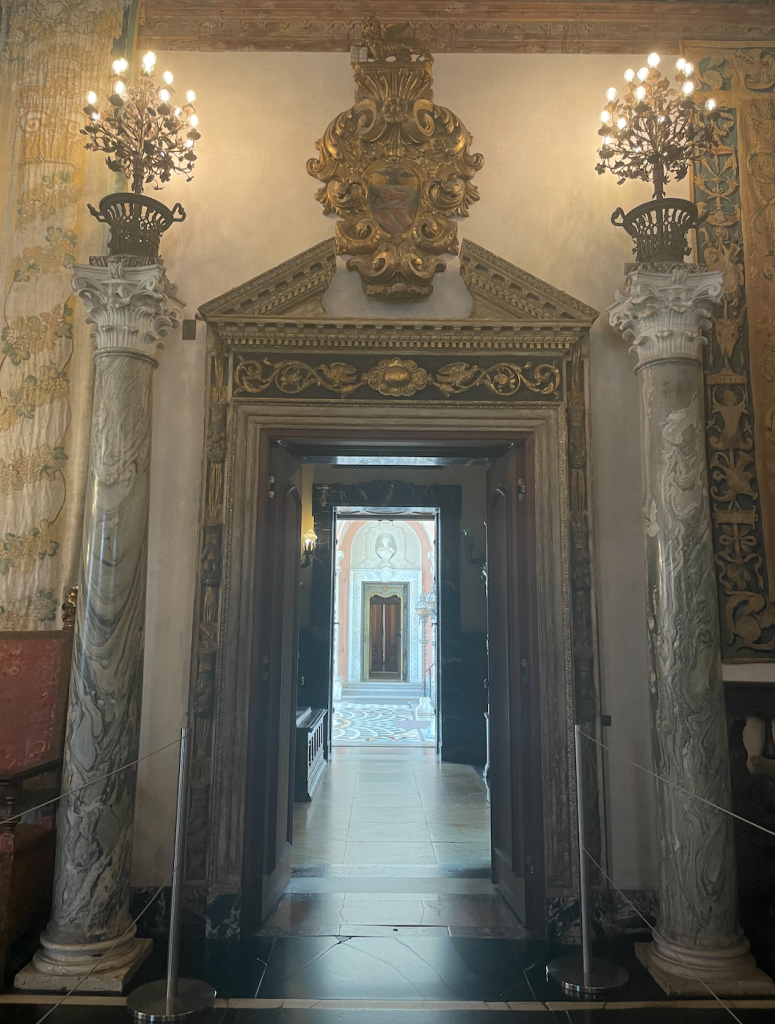
I have to say that my favorite thing out of all in the entire villa has to be the architecture and style in which things were built. The villa was developed in a Mediterranean Revival style, incorporating Baroque, Italian Renaissance, and Italian Renaissance Revival elements.
Seeing the villa actually inspired me and gave me ideas on things I would like to have in my home in the future. Some things include a chute (definitely), a personal library, an enormous balcony in my bedroom overlooking water, among many others. It was truly an experience I will never forget and I plan on going back soon!